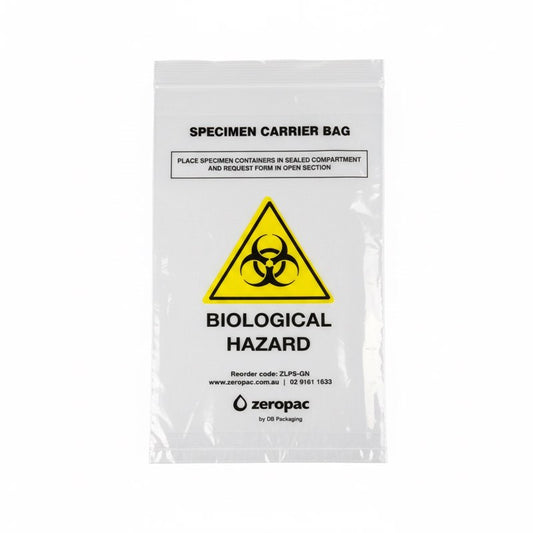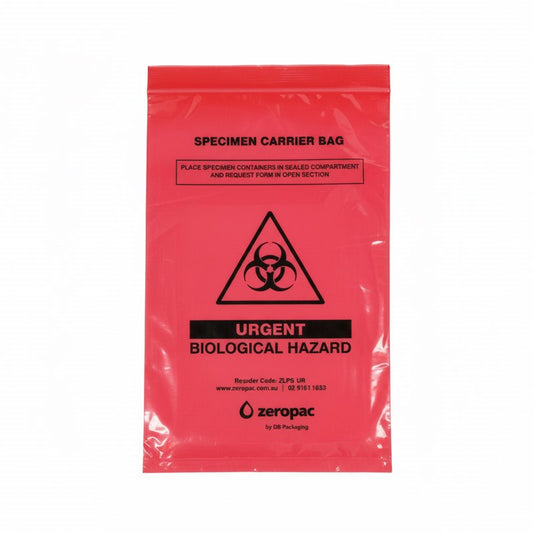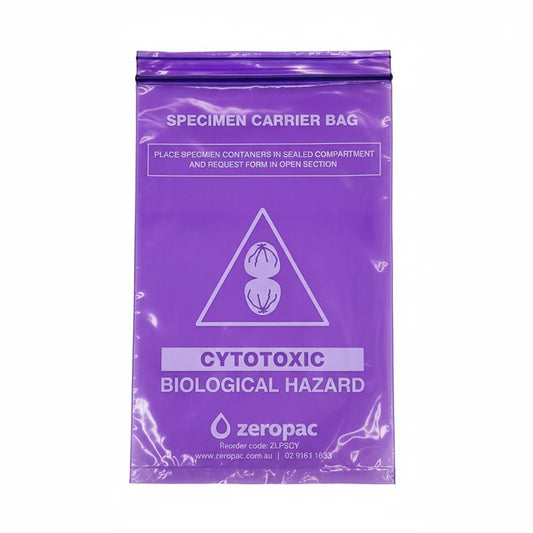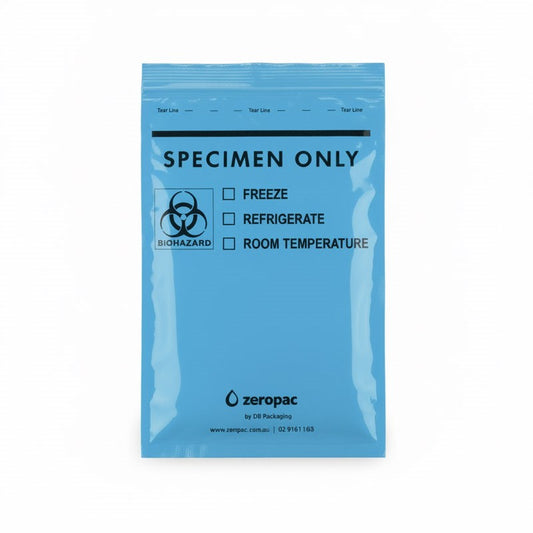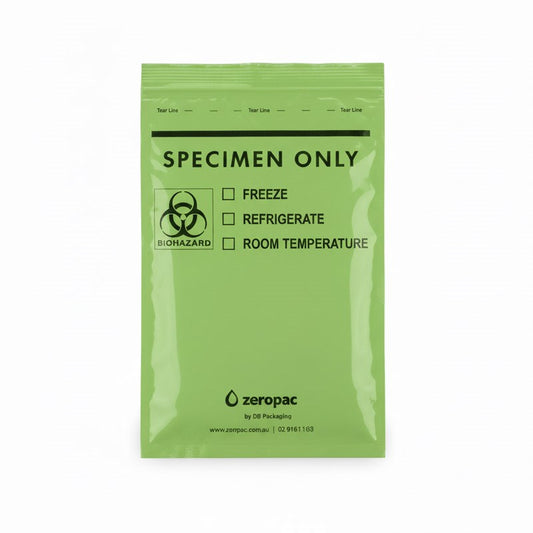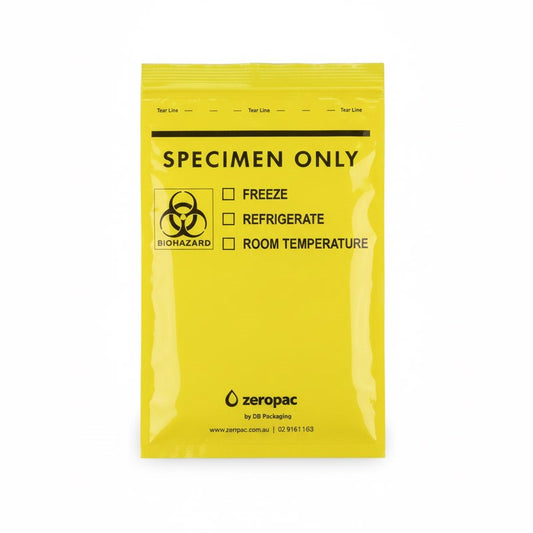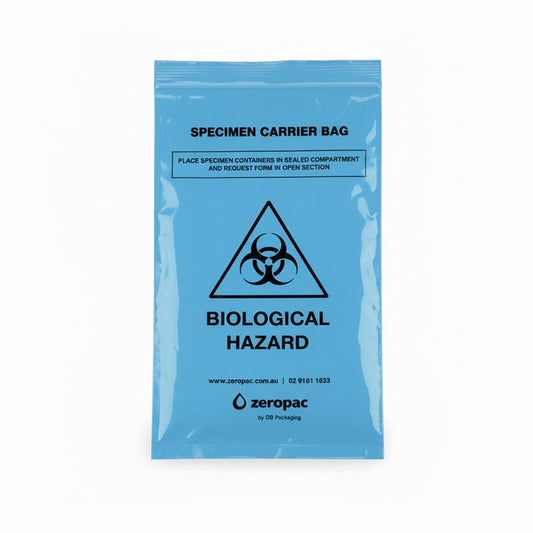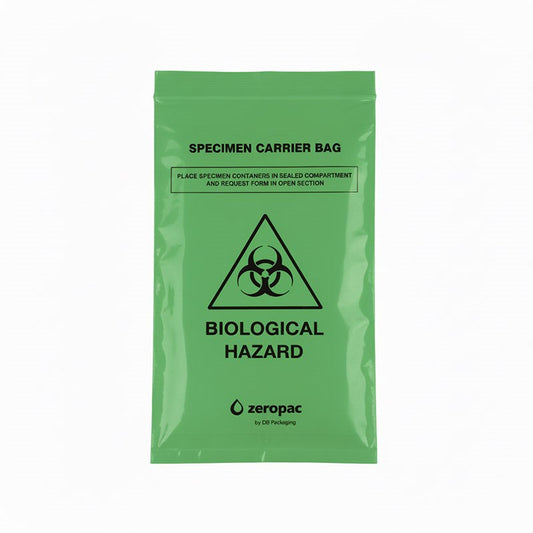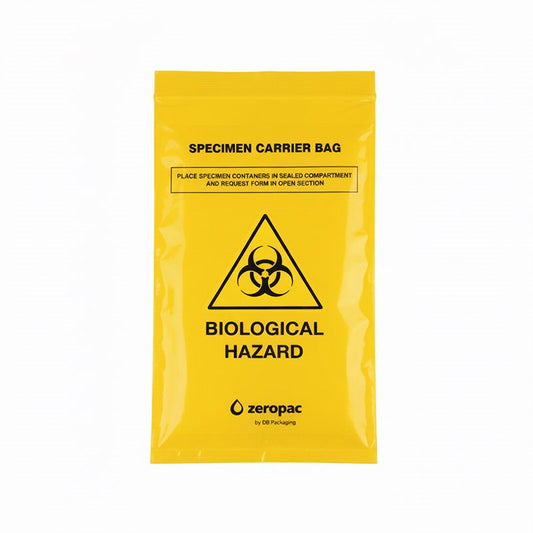-
General Pathology Specimen BagThree-Wall Specimen Bags with Document PocketKeep specimens secure and paperwork clean without cross contamination. This three-wall specimen carrier bag includes a dual pouch design with a sealed grip seal (press seal) zip-lock compartment for the sample container and a separate document wallet (document pocket)...
-
Urgent Pathology Specimen BagThree-Wall Urgent Pathology Specimen Bags with Grip Seal and Document PocketKeep urgent specimens secure and paperwork clean without cross contamination. This three-wall urgent pathology specimen carrier bag includes a dual pouch design with a sealed grip seal (press seal) zip-lock compartment for the sample...
-
Cytotoxic Pathology Specimen BagThree-Wall Cytotoxic Specimen Bags with Grip Seal and Document PocketKeep cytotoxic specimens secure and paperwork clean without cross contamination. This three-wall cytotoxic pathology specimen carrier bag includes a dual pouch design with a sealed grip seal (press seal) zip-lock compartment for the sample container...
-
Blue Tearline Pathology Specimen BagThree-Wall Specimen Bags with Tearline Opening and Document PocketSpeed up specimen processing with rapid-access tearline technology. This three-wall specimen carrier bag includes a dual pouch design with a perforated tearline strip for quick opening, a sealed specimen compartment and a separate document wallet (document...
-
Green Tearline Pathology Specimen BagThree-Wall Specimen Bags with Tearline Opening and Document PocketSpeed up specimen processing with rapid-access tearline technology. This three-wall specimen carrier bag includes a dual pouch design with a perforated tearline strip for quick opening, a sealed specimen compartment and a separate document wallet (document...
-
Yellow Tearline Pathology Specimen BagThree-Wall Specimen Bags with Tearline Opening and Document PocketSpeed up specimen processing with rapid-access tearline technology. This three-wall specimen carrier bag includes a dual pouch design with a perforated tearline strip for quick opening, a sealed specimen compartment and a separate document wallet (document...
-
Biohazard Pathology Specimen BagThree-Wall Specimen Bags with Document Pocket Keep specimens secure and paperwork clean without cross contamination. This three-wall specimen carrier bag includes a dual pouch design with a sealed grip seal (press seal) zip-lock compartment for the sample container and a separate document wallet (document...
-
Green Pathology Specimen BagThree-Wall Specimen Bags with Document Pocket Keep specimens secure and paperwork clean without cross contamination. This three-wall specimen carrier bag includes a dual pouch design with a sealed grip seal (press seal) zip-lock compartment for the sample container and a separate document wallet (document...
-
Yellow Pathology Specimen BagThree-Wall Specimen Bags with Document PocketKeep specimens secure and paperwork clean without cross contamination. This three-wall specimen carrier bag includes a dual pouch design with a sealed grip seal (press seal) zip-lock compartment for the sample container and a separate document wallet (document pocket)...
Popular Searches
Popular Products
- $0.00
- $0.00
- Unit price
- / per
- $0.00
- $0.00
- Unit price
- / per
- $0.00
- $0.00
- Unit price
- / per
Pathology Specimen Bags | Secure Medical Bags
Three-wall pathology specimen bags with dual pouch design. Keep specimens secure and documentation clean with Zeropac's comprehensive range of clinical specimen bags. Our grip seal specimen compartment and separate document pocket prevent cross contamination and moisture damage across Australian collection centres, clinics and laboratories.
Available in clear, blue, yellow and green for colour-coded workflows. Choose standard grip seal or rapid-access tearline options for high-volume labs. Australian stock ensures fast delivery when you need restocks urgently.
Clinical Specimen Bags for Every Healthcare Workflow
Australia's most comprehensive selection of biohazard specimen bags for pathology collection, transport and processing. Three-wall LDPE construction with proven dual pouch design keeps biological specimens secure while maintaining request forms completely separate.
Dual Pouch Design Prevents Common Problems
- No more wet request forms from specimen condensation
- No more damaged paperwork from handling
- Zero cross contamination between samples and documentation
- Visual verification through clear film without opening bags
Perfect for: High-volume pathology labs • Hospital collection centres • GP clinics • Aged care facilities • Mobile pathology services
Colour-Coded Pathology Specimen Bags
Implement visual identification systems with specimen bags in clear, blue, yellow and green.
How healthcare facilities use colour coding:
- By location: Blue = Site A, Yellow = Site B, Green = Site C
- By department: Blue = Microbiology, Yellow = General Path, Green = Serology
- By test type: Different colours for different specimen categories
- By priority: Colour-code urgent vs routine specimens
All coloured bags feature identical quality—same LDPE film, printed biohazard symbols and dual pouch design. The colour difference is purely visual for systematic sorting.
Specialty Specimen Bags
Cytotoxic Pathology Specimen Bags (Purple)
Distinctive purple film with cytotoxic markings for specimens from chemotherapy patients. High-visibility colour ensures proper safety handling throughout collection and transport.
Urgent Pathology Specimen Bags (Red)
Red tint film with urgent/priority markings for time-critical specimens. Emergency departments and ICU units use these for immediate processing requirements.
Tearline Specimen Bags for High-Volume Labs
Process specimens faster with perforated tearline bags in blue, yellow and green.
Tearline advantages:
- Rapid specimen access without tools
- Easier to open when wearing gloves
- Saves seconds per specimen (adds up to hours in high-volume labs)
- Document pocket stays sealed when specimen compartment opens
- Fully sealed during transport—same security as standard bags
Ideal for: Labs processing 100+ specimens daily • Time-critical testing workflows • High-throughput pathology operations
Australian Stock = Fast Delivery
All specimen bags ship from our Sydney warehouse. No waiting weeks for overseas shipments when critical supplies run low.
Stock reliability you can count on:
- Fast delivery across Australia
- Substantial stock levels of all colours and types
- Restocks arrive in days, not weeks
- Consistent batch quality across all orders
Pack sizes: 100 bags per pack • 1,000-2,000 bags per carton for bulk supply
Three-Wall LDPE Construction
Durable design for secure specimen transport:
- Three-wall LDPE film resists tears and punctures
- Grip seal closure holds specimens securely during handling
- Clinical grade polyethylene for reliable performance
- Separate document pocket protects request forms from moisture
- Visual verification through clear or tinted film
Compliance & Biohazard Identification
Printed biohazard symbols and clear identification markings support infection control and accreditation requirements.
Compliance features:
- Australian standards compliant for clinical specimen transport
- Suitable for NATA, ACHS and healthcare quality frameworks
- Biohazard symbols alert staff to proper handling protocols
- Printed instructions reduce errors from new staff
- Temperature checkboxes on tearline bags (Freeze/Refrigerate/Room Temperature)
Healthcare Applications
Hospital Pathology Departments
Routine blood and fluid specimen collection from wards, emergency departments and outpatient clinics. Dual pouch prevents illegible request forms from moisture.
Private Pathology Labs
Colour-coded bags enable rapid visual sorting when courier services deliver hundreds of specimens from multiple sites daily.
Aged Care Facilities
Clear biohazard marking and simple dual pouch design support confident specimen collection and infection control during storage before courier pickup.
GP Clinics & Medical Centres
Daily pathology requests with optional colour coding for different providers or test types. 100-bag packs suit smaller facilities' monthly usage.
Mobile Pathology Services
Three-wall construction and secure seals prevent leakage during transport on rough roads and extended collection routes across regional areas.
Choosing Your Specimen Bags
| Your Need | Recommended Bag |
|---|---|
| Single-site straightforward workflows | Clear specimen bags (standard grip seal) |
| Multi-site operations needing visual sorting | Colour-coded bags (blue, yellow, green) |
| High-volume labs (100+ specimens daily) | Tearline bags (blue, yellow, green) |
| Cytotoxic specimen handling | Purple cytotoxic bags (mandatory) |
| Emergency/urgent specimens | Red urgent bags (priority signalling) |
| Transport-focused workflows | 100 PCS per Pack |
| Standards | Standard grip seal bags (cost-effective) |
Stock Reliability for Critical Workflows
Pathology workflows can't pause for supply delays. Zeropac maintains Australian warehouse stock of all specimen bag types, colours and sizes. Restocks arrive in days, not weeks—preventing operational disruptions when critical supplies run out unexpectedly.
Browse Complete Specimen Bag Range
Explore our full selection of clinical specimen bags below:
- Standard grip seal bags: Clear, blue, yellow, green
- Rapid-access tearline bags: Blue, yellow, green
- Specialty bags: Purple cytotoxic, red urgent
All products ship from Australian stock with fast delivery nationwide.
Request a sample or contact our team for assistance selecting the right specimen bags for your facility.
Related Medical Packaging
- Clinical Waste Bags – Yellow, red and purple bags for medical waste management
- Cytotoxic Waste Bags – Purple bags for chemotherapy waste disposal
- Medical Collection – Complete range of medical packaging solutions
- Choosing a selection results in a full page refresh.



